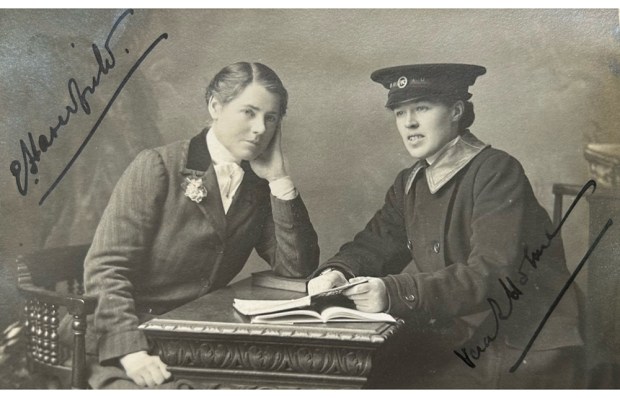The Rosetta Stone has an awful lot in common with a Kinder Surprise Egg. Hear me out. The actual text of the Rosetta Stone is mainly about some changes to tax rules, and is about as interesting as such things usually are. The one important fact about it, for us, is that it is written in three languages and three alphabets: Greek, Demotic and Hieroglyphics: the Language of the Ionians, the Language of the Documents, and the Language of the Gods. Thus hieroglyphics were decoded.
A Kinder Surprise Egg does an awful lot more than this. Tucked inside with the cheap plastic toy is a tiny sheet of paper that says: ‘WARNING, read and keep: Toy not suitable for children under three years. Small parts might be swallowed or inhaled.’ But the piece of paper does not just say it in English; it repeats the same message in 34 different languages and scripts. This makes that little warning the equivalent toten Rosetta Stones — plus you get a toy and a chocolate egg.
Of course, any right-thinking chap will just scrumple up this useless bit of paper and throw it in the bin. It is an amusing paradox of modern life that when you’re unpacking a new purchase, you know, with terrible certainty, that the slip of paper that says something like ‘IMPORTANT! PLEASE READ! CONTAINS VITAL SAFETY INFORMATION!’ is the one that you absolutely don’t need to bother with. It will just tell you that the product should not be used to stab yourself in the eye, or be set alight and left in a petrol station. Every sensible fellow knows that. Fortunately, Keith Kahn-Harris, the author of The Babel Message, is not a sensible fellow.
He collects these Kinder warning sheets. He obsesses over them. He tracks down versions new and old. And he has now written a 300-page book about them. Except, of course, that the book is not really about the warning message; it is about languages in general, the whole glorious worldwide mess of them.
The Kinder Surprise warning message is a conceit upon which to build a book. It’s a very neat and charming one. There is a delicious humour implicit in every page, as Kahn-Harris shows what the warning would look like in hieroglyphics or ancient cuneiform. But it is also, strangely, a very clever and methodical conceit.
Too many books on language begin with the sublime. They tell you that you will never truly appreciate the wonders of Greek drama or Balinese poetry until you have spent a decade mastering every subtle detail and nuance of the language. This is both dispiriting for the general reader and unprovable. However, the Kinder Surprise warning message functions as a great leveller. Languages can be compared in their ability to impart this simple bit of information. The results are truly odd. For example, I had no idea that Old Norse doesn’t appear to have had a word for ‘year’. Instead, a Viking would have been warned that the toy was not suitable for children with less than three winters.
Kahn-Harris applies this language test to everything. Thirty-four languages were not enough, so he has managed to obtain translations into many more — some of them real, such as Basque or Sumerian, some artificial, such as Esperanto and Braille, and some fanciful, such as Klingon and Scots.
Klingon, for those innocent of such things, is the language spoken by the nasty aliens in Star Trek. It is a fully functioning language with no native speakers. This allows for a whole chapter on the process of inventing languages for television series such as Game of Thrones or world communication (Esperanto).
A strange first, for me at least, in this book was the presence of QR codes. Sign language is, of course, very hard to render on paper. So instead you can point your phone at a squiggle and watch a YouTube video of the warning being performed in both British and American sign language. The reactionary, technophobic, Luddite part of me found this very disconcerting; but the remaining 1 per cent of me had to admit that it worked rather well.
As the title suggests, this is a book about all languages and about all forms of language. The author cannot, therefore, know them all. And therein lies the final charm of the work. Kahn-Harris confesses at the outset that he speaks only a very few languages, and most of those badly. This is an advantage.
Many books on language have the air of a smug teacher telling you that you really should know as much as they do, or at least have kept practising the French that you learnt at GCSE. But The Babel Message does the opposite. It is filled with a sense of wonder, gazing at languages that neither the writer nor reader understands. Though the author has corresponded with experts, who have explained how a translation into some obscure creole works, the book is about ‘the pleasures and possibilities of not understanding’. It lingers upon the beauty of enigmatic alphabets, odd diacritics and the pleasant strangeness of the incomprehensible.
There is a lot to be said for gazing at what you do not understand. Not only is it a rather good metaphor for the human condition, but it makes us see things that we would not notice if our interest were purely utilitarian. Many a time I have sat on trains or planes in other countries wondering what a big red sign is warning me of, and ending only by admiring the font. (I also have a little collection of books that I have written translated into Thai, Korean, Japanese and other languages whose scripts I can’t read. It’s rather amusing to gaze at all the pretty symbols and think ‘I wrote that.’)
The Babel Message ends up being a much better book for this. Kahn-Harris comes across as not a guide but a companion. And the central conceit of the whole book is, in the end, not so much a joke as a skeleton key to the world of languages. As he puts it, that little warning message, ‘a text that sets no pulses racing, can help us knit together our common experience of the travails of life’.
In fact, The Babel Message was such fun that I even went out and bought a Kinder Surprise Egg. It contained the warning note, along with a tiny plastic model of a ptero-dactyl. It’s testimony to the charm of this book that I immediately started wondering how you’d say pterodactyl in Old Norse.
Got something to add? Join the discussion and comment below.
Get 10 issues for just $10
Subscribe to The Spectator Australia today for the next 10 magazine issues, plus full online access, for just $10.
You might disagree with half of it, but you’ll enjoy reading all of it. Try your first month for free, then just $2 a week for the remainder of your first year.














Comments
Don't miss out
Join the conversation with other Spectator Australia readers. Subscribe to leave a comment.
SUBSCRIBEAlready a subscriber? Log in